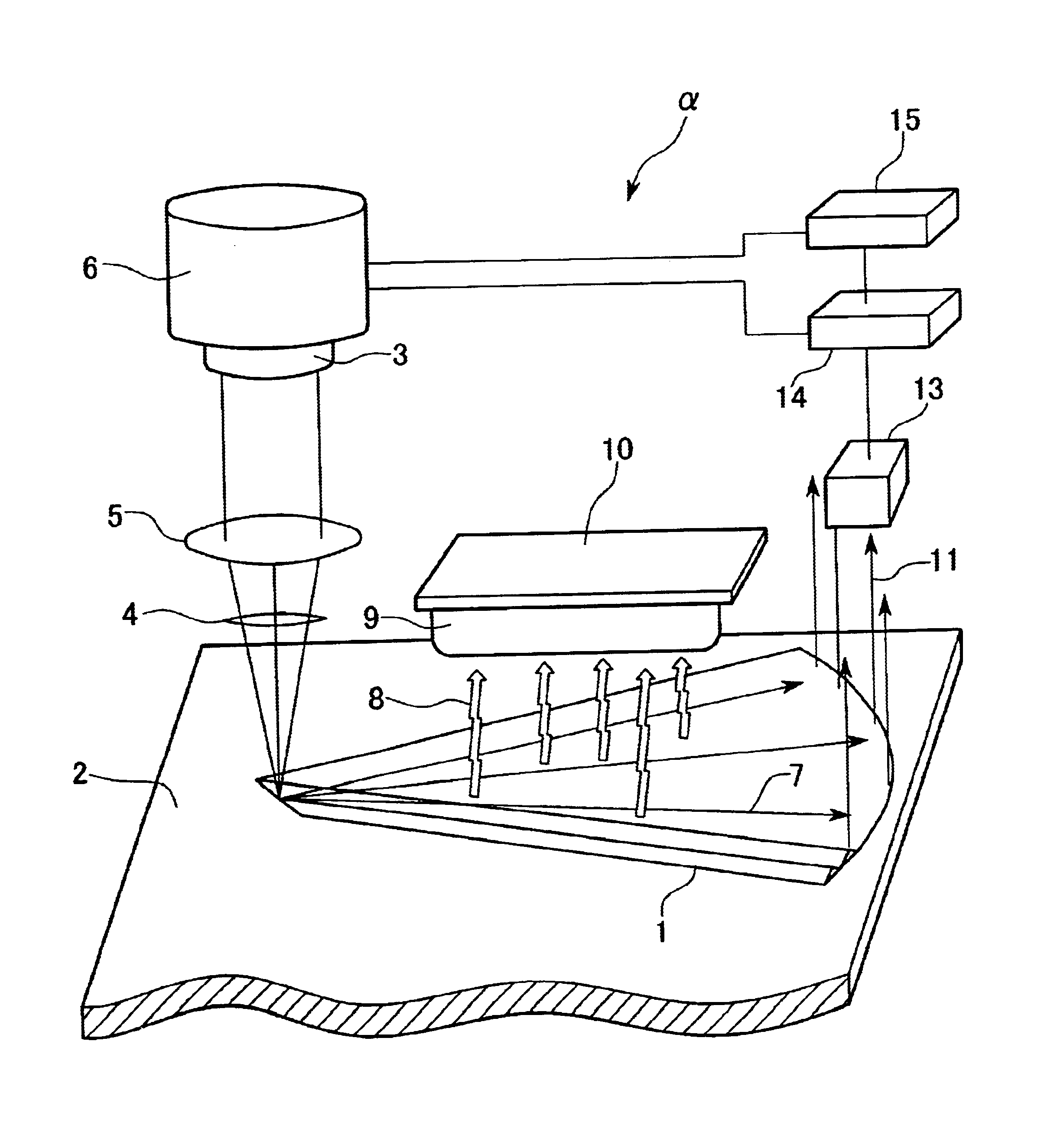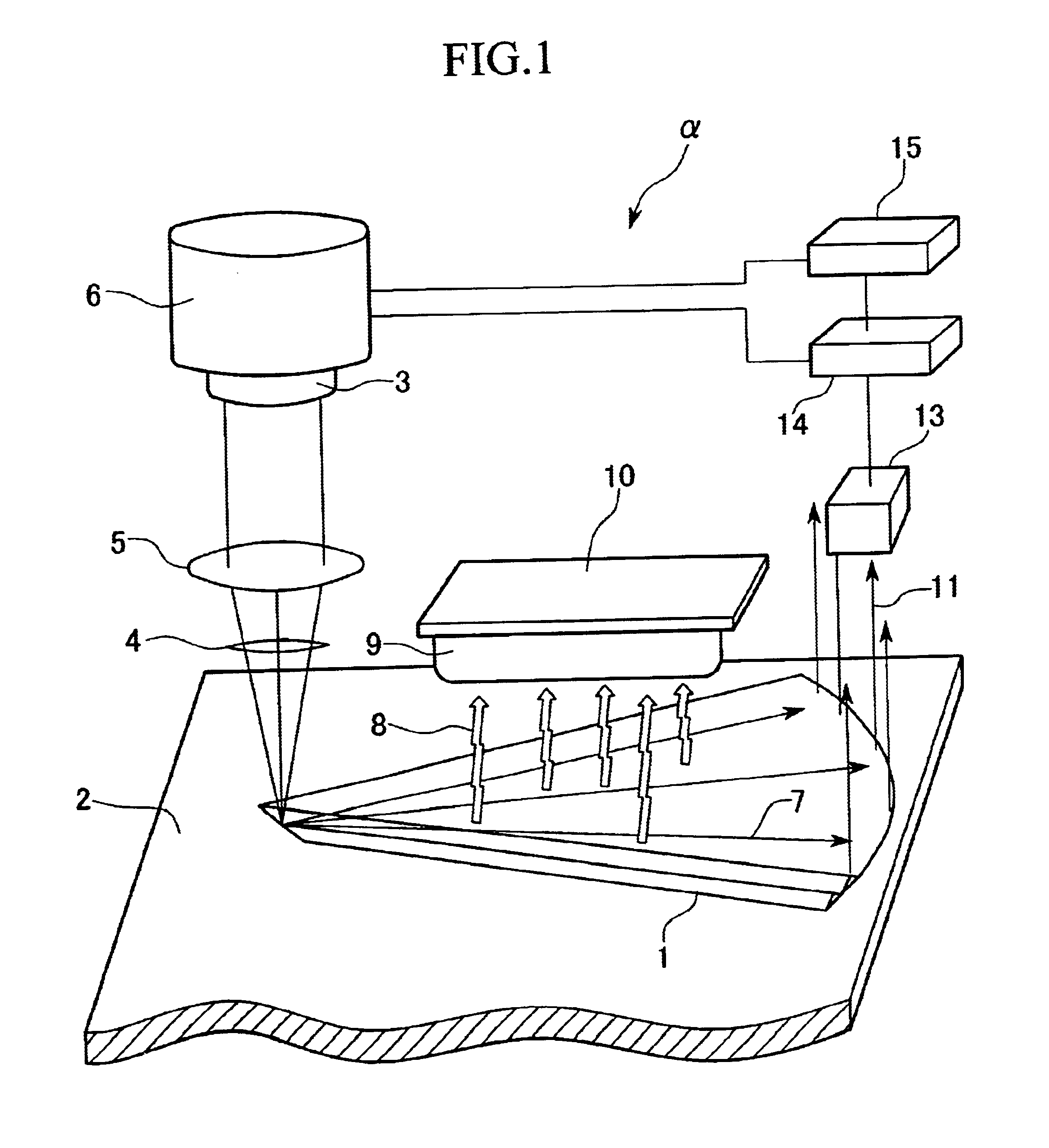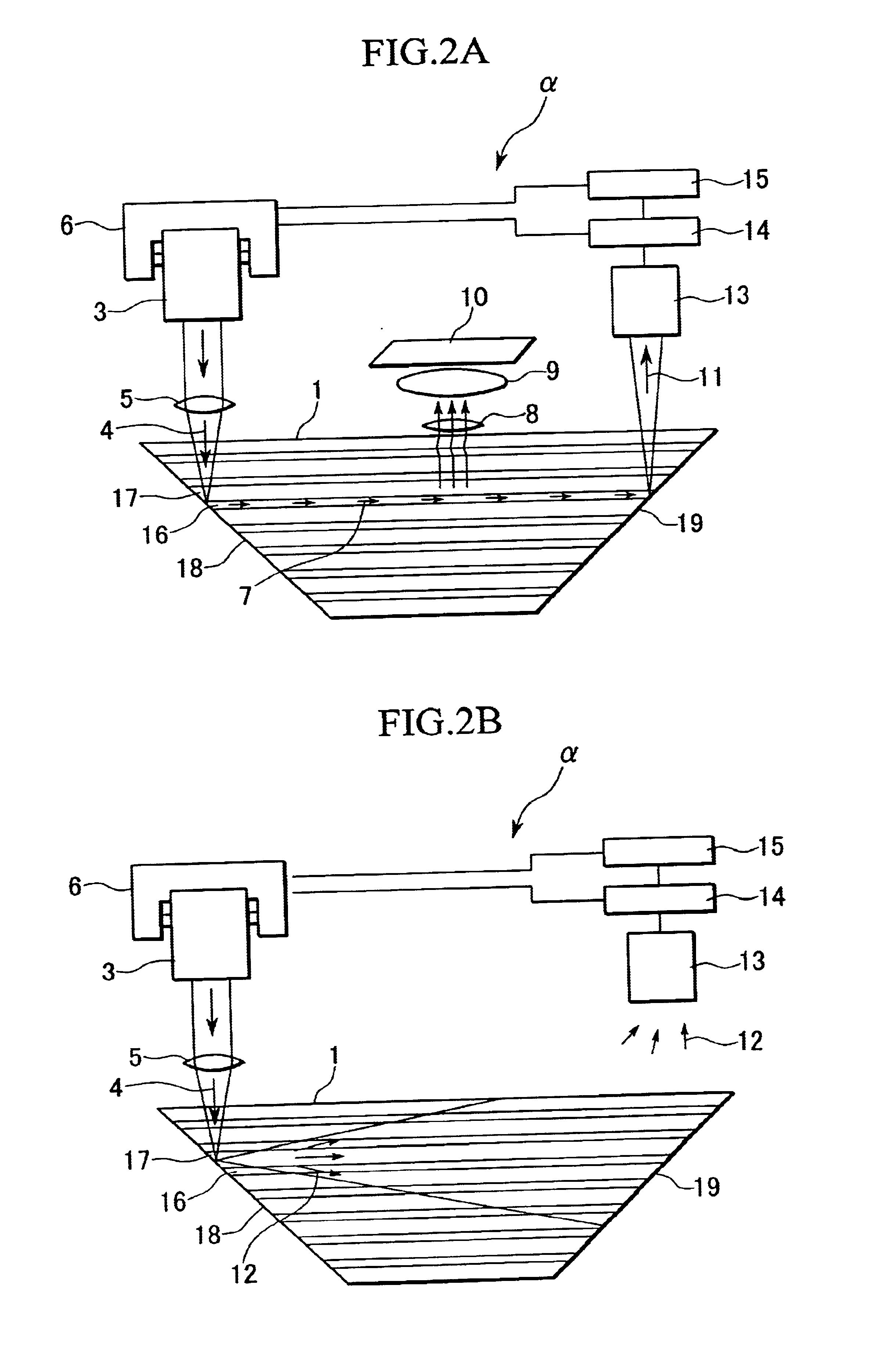Information reading apparatus and information recording medium
a technology of information reading and information recording medium, which is applied in the field of information technology, can solve the problems of insufficient to meet future requirements, high cost of bits in such devices, and limited use in a limited number of applications
- Summary
- Abstract
- Description
- Claims
- Application Information
AI Technical Summary
Problems solved by technology
Method used
Image
Examples
embodiment 3
Examples in the Embodiment 3 are related to another configuration of the card media, card reading apparatus and method.
FIG. 12 shows a perspective view of another configuration of the card medium AA, placed in key parts of a card reader .xi.. FIG. 13 shows a partial enlarged view of the inner periphery of the card medium AA shown in FIG. 12, and FIG. 14 shows a block diagram of the card reader .xi. designed to read the card medium AA.
Card Medium Example
The card medium AA has a disc AB in which a number of the wedge shaped recording sections B2, having a laminated recording layer B1, are embedded in a ring-shape in the disc AB, and is provided with solid-state drive device A2 touching the outer periphery of the disc AB which is freely rotatably supported in a circular disc housing cavity or a depression A1, to rotate the disc AB with respect to the card medium AA. The solid-state drive device A2 is most adaptable to ultrasonic motor (traveling-wave acousto-elastic element) which is l...
embodiment 4
Examples in the Embodiment 4 are related to another configuration of the card media, card reading apparatus and method.
FIG. 15A shows a configuration of the card reading apparatus in Embodiment 4.
An information output apparatus 300 is comprised by: a laser source 312; a collimator system 313 for shaping the laser beam; a first beam splitter 314; a second beam splitter 315; a converging lens 320; a cylindrical lens 316; 4-sector detector 317; an edge detection circuit 318; and an objective lens (converging lens) 319. A memory card 310 has a laminated recording structure, and is placed in an information output apparatus 300. The apparatus 300 injects light into the memory card 310 and obtains information from a desired waveguide layer stored in the hologram section 311 produced by the reflected light.
The multi-layered hologram section 311 is comprised by four waveguides 311-1.about.311-4, which are multi-layered core layers and cladding layers. The lateral surfaces of at least the lef...
PUM
 Login to View More
Login to View More Abstract
Description
Claims
Application Information
 Login to View More
Login to View More - R&D
- Intellectual Property
- Life Sciences
- Materials
- Tech Scout
- Unparalleled Data Quality
- Higher Quality Content
- 60% Fewer Hallucinations
Browse by: Latest US Patents, China's latest patents, Technical Efficacy Thesaurus, Application Domain, Technology Topic, Popular Technical Reports.
© 2025 PatSnap. All rights reserved.Legal|Privacy policy|Modern Slavery Act Transparency Statement|Sitemap|About US| Contact US: help@patsnap.com



